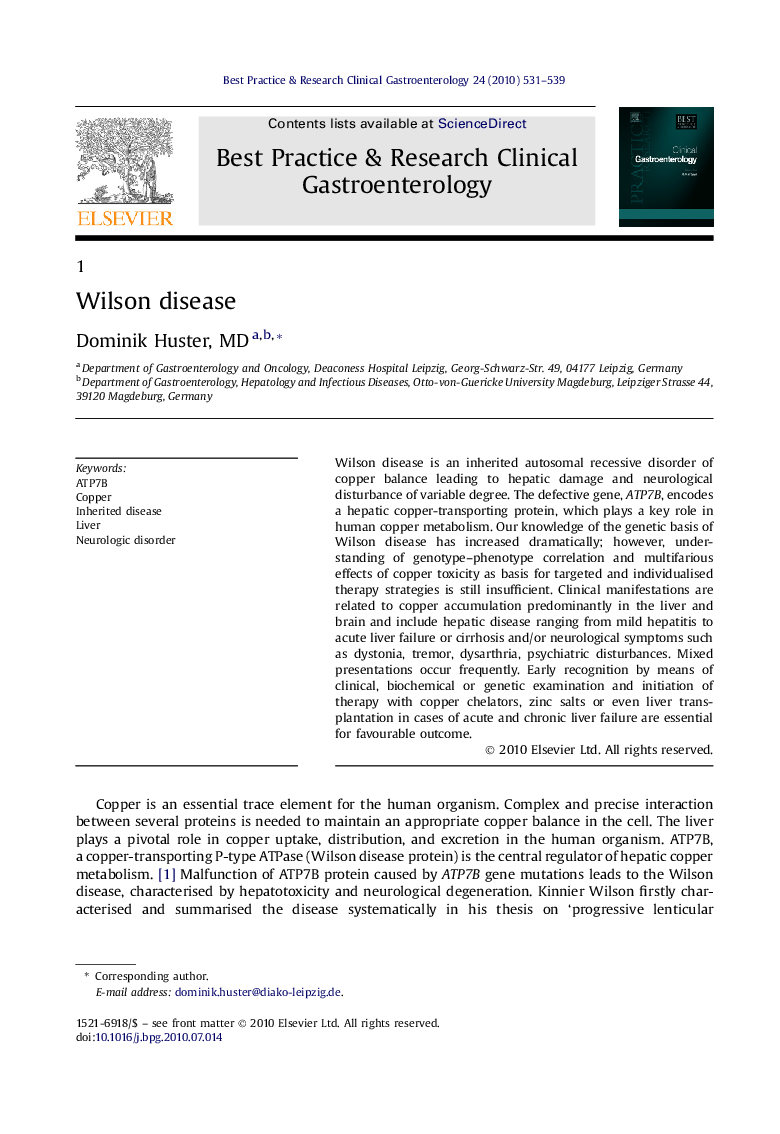| Article ID | Journal | Published Year | Pages | File Type |
|---|---|---|---|---|
| 3254282 | Best Practice & Research Clinical Gastroenterology | 2010 | 9 Pages |
Wilson disease is an inherited autosomal recessive disorder of copper balance leading to hepatic damage and neurological disturbance of variable degree. The defective gene, ATP7B, encodes a hepatic copper-transporting protein, which plays a key role in human copper metabolism. Our knowledge of the genetic basis of Wilson disease has increased dramatically; however, understanding of genotype–phenotype correlation and multifarious effects of copper toxicity as basis for targeted and individualised therapy strategies is still insufficient. Clinical manifestations are related to copper accumulation predominantly in the liver and brain and include hepatic disease ranging from mild hepatitis to acute liver failure or cirrhosis and/or neurological symptoms such as dystonia, tremor, dysarthria, psychiatric disturbances. Mixed presentations occur frequently. Early recognition by means of clinical, biochemical or genetic examination and initiation of therapy with copper chelators, zinc salts or even liver transplantation in cases of acute and chronic liver failure are essential for favourable outcome.
